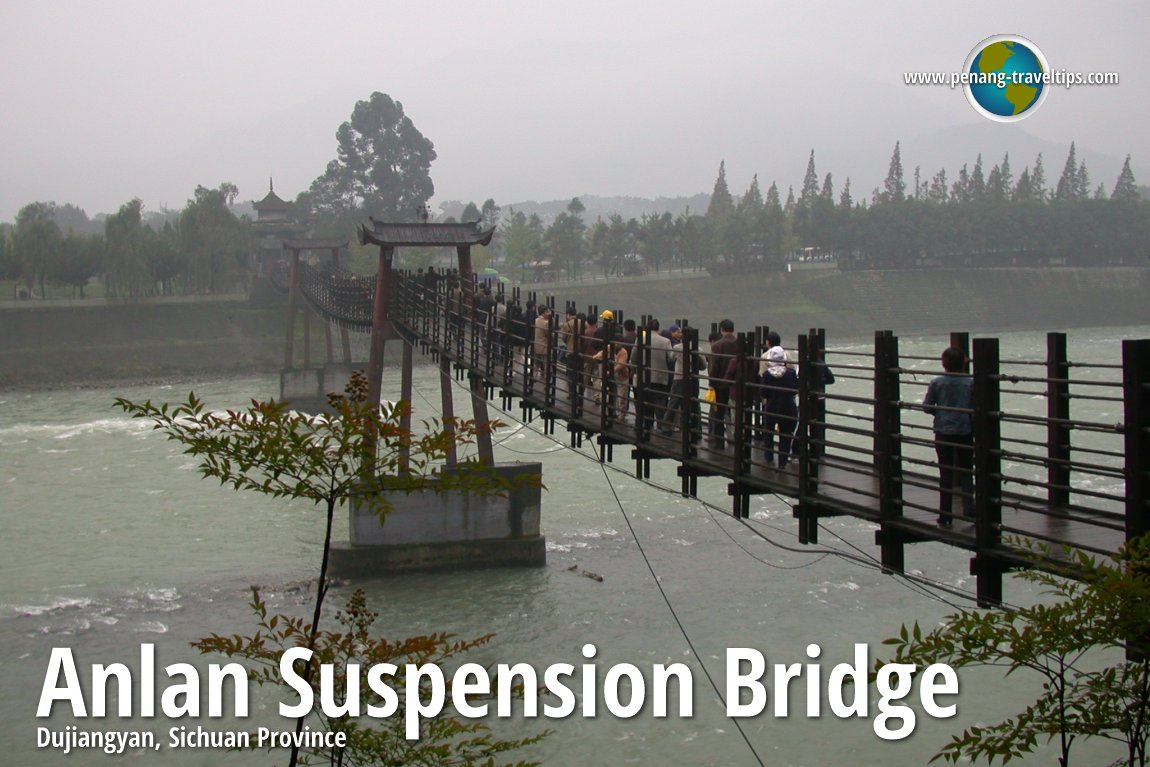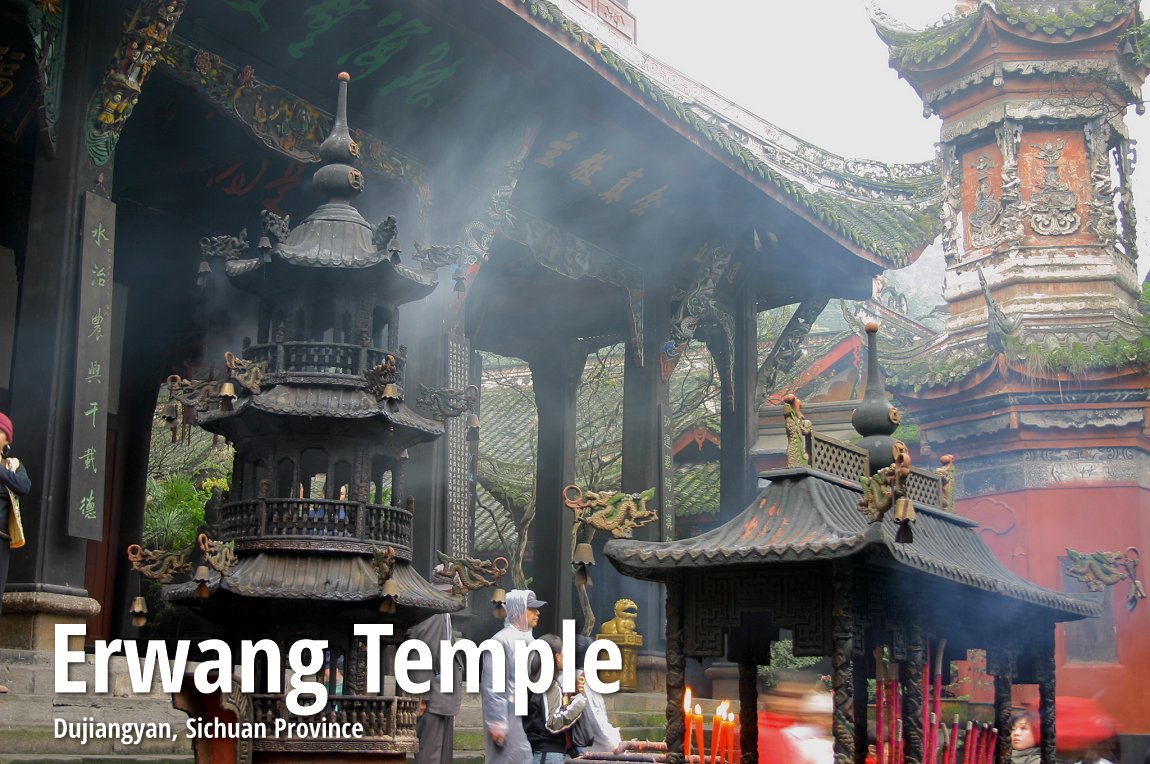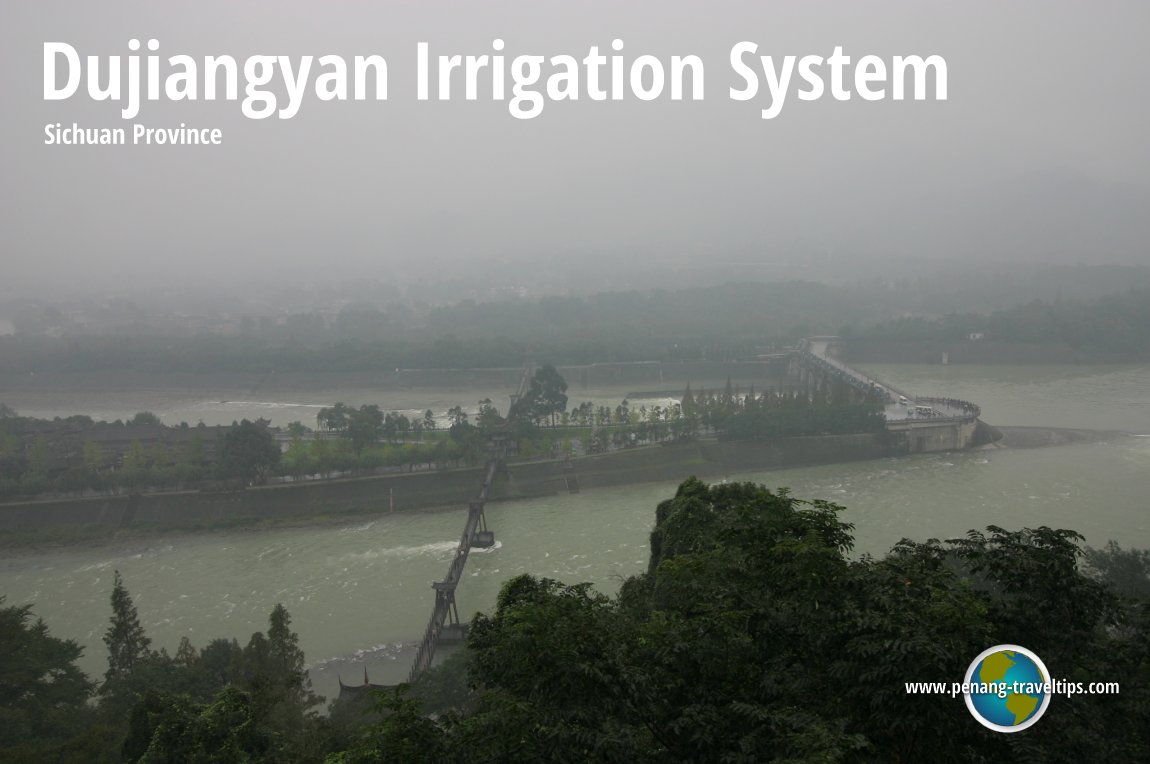 Dujiangyan Irrigation System (19 October, 2005)
Dujiangyan Irrigation System (19 October, 2005)
The Dujiangyan Irrigation System 都江堰 is a historical Chinese irrigation system that was constructed around 250 BC by the Governor Li Bing (and his son) of Shu Prefecture in Qin State. It is located in Dujiangyan, 56 km west of present day Chengdu. Today, over two thousand years later, the Dujiangyan Irrigation System still supplies water. The system works by diverting part of the Minjiang River into an aqueduct leading to Chengdu. In 2000, it was made a World Heritage Site along with Mount Qingcheng.
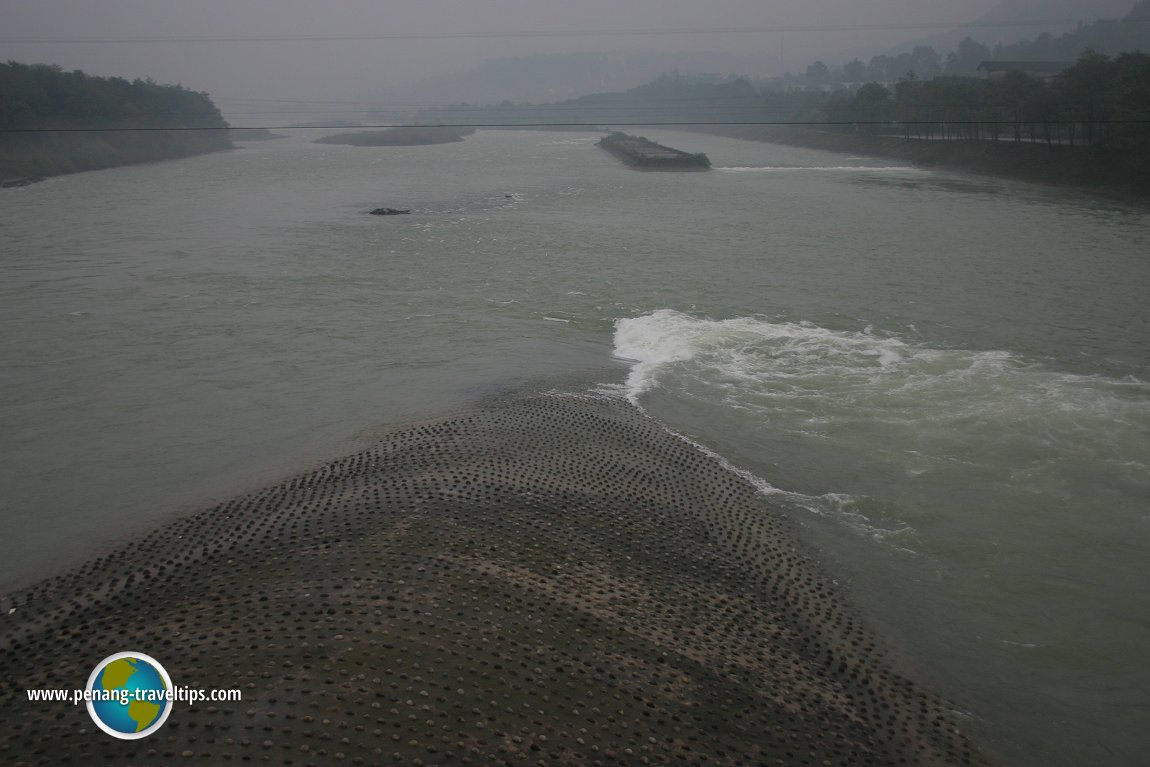 The Fish Mouth Levee: water of the Minjiang River (at left) is diverted by the Dujiangyan aqueduct to supply water to Chengdu (19 October 2005)
The Fish Mouth Levee: water of the Minjiang River (at left) is diverted by the Dujiangyan aqueduct to supply water to Chengdu (19 October 2005)
World Heritage Site Inscription Details
Location: N31 0 6.012 E103 36 19.008Inscription Year: 2000
Type of Site: Cultural
Inscription Criteria: II, IV, VI
Sights within Dujiangyan
To build the Dujiangyan Irrigation System, Li Bing had to cut a path through Mount Yulei on the bank of the Minjiang River. This is accomplished before the invention of explosives by repeatedly heating and cooling the rock to crack and weaken it. The Dujiangyan irrigation system also includes a dike in the middle of the river and spillways to help reduce the silt that flows into the aqueduct. The spillways allow excess water to continue down the Minjiang River in order to prevent the flooding of the Chengdu basin. Thus, in addition to supplying water, the system also prevents flooding.
Due to the Dujiangyan Irrigation System, the amount of irrigated area was expanded from 126,000 hectares to nearly 660,000 hectares covering 36 counties.
The Dujiangyan Irrigation System consists of three main parts:
In the 2008 Sichuan Earthquake (also called the Wenchuan Earthquake after the county in its epicenter) that happened on 12 May 2008, the "Fish Mouth" of the ancient Jujiangyan Irrigation System suffered some cracks but was otherwise undamaged.
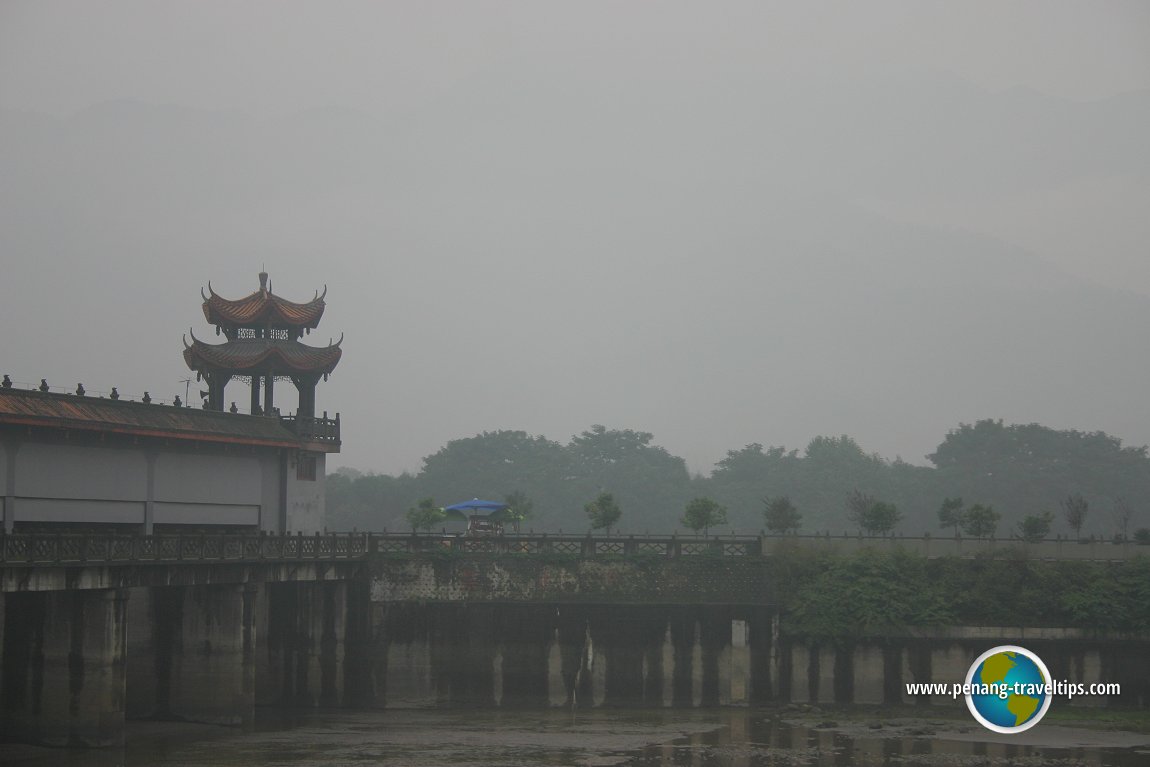 The Feishayan spillway of the Dujiangyan Irrigation System (19 October 2005)
The Feishayan spillway of the Dujiangyan Irrigation System (19 October 2005)
Getting there
It is best to arrange with a travel agent in Chengdu or abroad to reach Dujiangyan. Visit includes a tour of the Erwang Temple and the Anlan Suspension Bridge.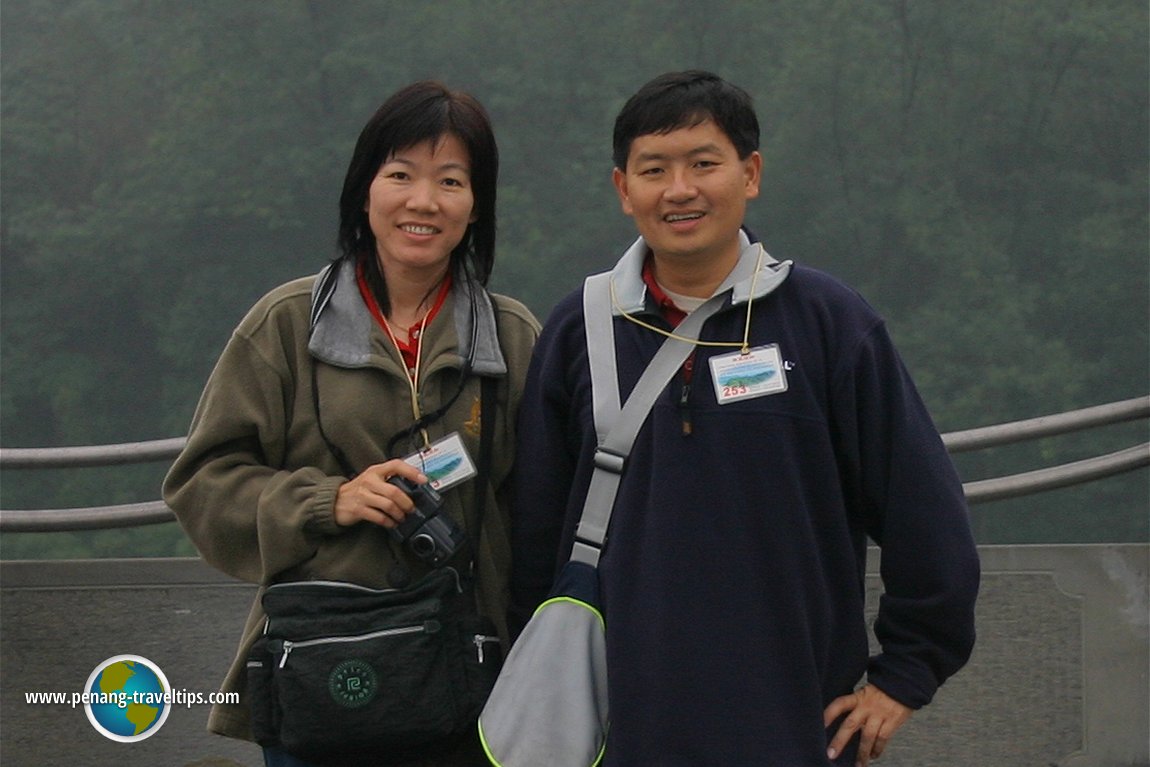 Tim and Chooi Yoke at Dujiangyan Irrigation System (19 October 2005)
Tim and Chooi Yoke at Dujiangyan Irrigation System (19 October 2005)
List of World Heritage Sites in Sichuan Province and World Heritage Sites in China
 Latest updates on Penang Travel Tips
Latest updates on Penang Travel Tips
 Map of Roads in Penang
Map of Roads in Penang
Looking for information on Penang? Use this Map of Roads in Penang to zoom in on information about Penang, brought to you road by road.
Copyright © 2003-2025 Timothy Tye. All Rights Reserved.

 Go Back
Go Back